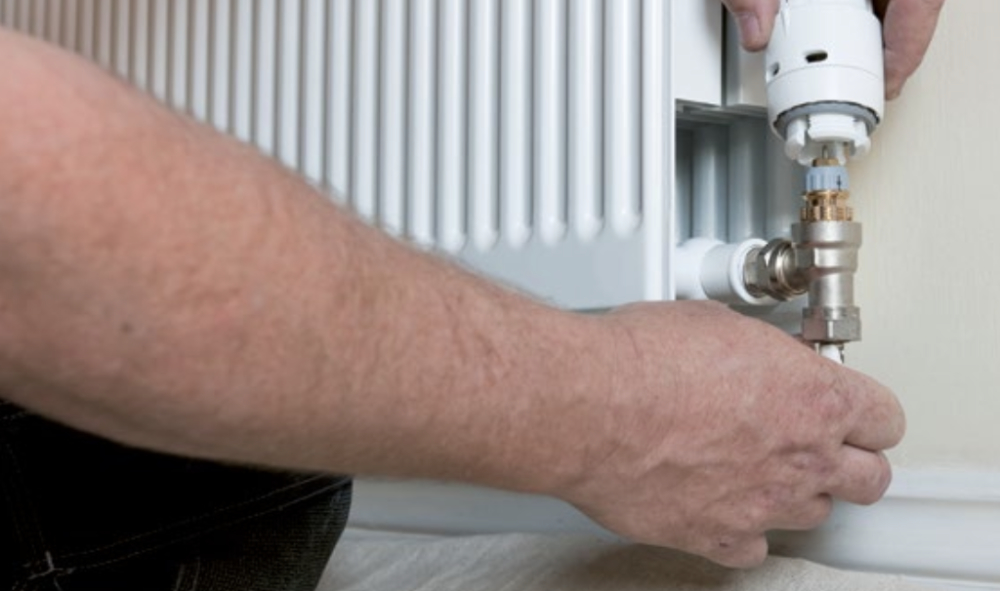Preparing for the future: how specifiers can lead the way
As the construction industry prepares for updated home and building efficiency standards, specifiers have an important role in shaping homes of the future. But what will be the key elements of the anticipated Future Homes Standard? And how do we guarantee effective specification in meeting regulations, as well as long-term reliability, efficiency, and ease of maintenance?
As part of the UK’s net-zero strategy, the construction industry has experienced several changes in recent years; namely the updates to Part L of the Building Regulations, which have placed a greater emphasis on efficiency. These changes are thought to be paving the way for the introduction of overarching home and building efficiency standards – including the Future Homes Standard (FHS), which is currently expected to launch next year. While the new Government reviews the feedback and proposals from the Future Homes Standard consultation carried out in 2023, it has outlined its commitment to supporting the need for low carbon homes.
Should the updated standards be introduced in 2025 as anticipated, the FHS will establish new standards for energy efficiency and sustainability in homes – from traditional homes through to apartments – playing a significant role in their decarbonisation by prioritising heating, hot water systems and reducing waste. To make this possible, the choice of plumbing and heating materials has become more critical than ever.
Specifiers, through careful consideration and planning, will take a leading role in ensuring these systems not only meet the new regulations but also provide reliable, high- quality performance for years to come.
When navigating regulatory requirements for new build homes, specifiers must consider a number of factors to ensure compliance and optimal performance.This includes:
- Temperature. Under Part L, wet central heating systems must operate at a maximum temperature of 55°C to enhance efficiency, reduce energy consumption, and meet the stringent standards of the FHS.Additionally,for larger spaces (150m2 or more), time controls are mandatory to manage heating schedules better, ensuring energy is only used when needed.
- Pipework. The pipework that feeds plumbing and heating systems can directly support efficiency and even help to reduce waste. By carefully planning the layout of pipework and specifying suitable materials,including plastic pipes and fittings, it is possible to reduce the potential for leaks and deliver the foundations for efficient performance. Part L also mandates that all pipework, whether running beneath floors or through walls, must be properly insulated to prevent heat loss and further improve efficiency.
- Renewable heat sources. Through the FHS, the phasing out of gas boilers is becoming a reality, with the focus for heat sources firmly on renewables such as heat pumps. For specifiers, this means careful consideration of system compatibility and sizing, particularly in ensuring that heat pumps and other renewable systems can efficiently meet the heating demands of the property. Here, pairing heat pumps with underfloor heating systems can make a significant contribution towards the efficiency of new homes.
As the FHS sets new benchmarks for energy efficiency and sustainability in new builds, there are other considerations in building design where valves play an important role in safeguarding users, reducing water usage or preventing backflow contamination. With health and safety and efficiency becoming more of a focus in modern homes that are fit for the future, there are some valves which shouldn’t be overlooked.
Valves manage the flow of water throughout a system, which can directly support levels of efficiency and consumption. In order to create homes that are fit for the future, there are some valves which shouldn’t be overlooked, including:
- Pressure Reducing Valves (PRVs) are essential for regulating water pressure entering a property, ensuring it is adequate to deliver on occupant needs, while supporting safe system operation by avoiding excessive levels of pressure.By effectively reducing water pressure,flow rate is also impacted, lowering the risk of high water consumption which in turn contributes to the efficiency goal set out by the FHS. Compact models like the Reliance Valves 312 Compact PRV are well-suited for domestic systems,offering reliable performance alongside easy maintenance.
- Double Check Valves are designed to prevent backflow, which can contaminate the water supply and pose health risks. Although domestic properties are typically low risk, incorporating double-check valves provides an additional layer of protection and are essential in order to comply with the water regulations. This aligns with the emphasis within the FHS on ensuring safety and compliance in all aspects of home construction.
- Thermostatic Mixing Valves (TMVs) are required in new builds to prevent scalding and ensure safe water temperatures. By regulating the temperature of water, this valve can protect occupants from burns at the point of use, while also working in the background to help prevent the growth of bacteria.
Incorporating these valves early in the build process ensures that systems meet the FHS’s rigorous standards, enhance energy efficiency, and provide long-term reliability and safety. By choosing the right valves, specifiers can ensure new build homes are high-performing and fully compliant with the latest regulations.
As the construction industry prepares for updated home efficiency standards to be introduced by the new Government, specifiers must stay well-informed about the latest regulations to effectively shape the homes of tomorrow. The UK’s commitment to achieving net zero emissions by 2050 requires significant changes in how new homes are built, particularly inenhancing energy efficiency and sustainability. The introduction of the FHS builds on this by setting new standards for reducing energy consumption and promoting the use of renewable heat sources.
For specifiers, understanding and implementing these regulations is crucial. The FHS emphasises decarbonising heating and hot water systems and reducing heat waste, making the selection of appropriate plumbing and heating materials more important than ever. Key considerations include adhering to the new temperature limits for heating systems, ensuring proper insulation of pipework, and transitioning to renewable heat sources.
Specifiers play a vital role in ensuring that systems not only comply with these regulations but also deliver reliable, efficient, and long-lasting performance. By planning and selecting the right materials and technologies, specifiers can help create homes that meet modern standards while contributing to overall sustainability goals.
This article appears in the AT Journal issue 152, Winter 2024 as 'Preparing for the future: how specifiers can lead the way' and was written by Richard Bateman, Product Manager, RWC.
--CIAT
[edit] Related articles on Designing Buildings
- BRE Group response to the Future Homes Standard consultation.
- BRE response to the green housing revolution.
- Building Beautiful Places plan.
- Building Better, Building Beautiful Commission interim report.
- Building Better, Building Beautiful Commission.
- Changes to Building Regulations Part F.
- Getting zero carbon done.
- Future Buildings Standard.
- Future Buildings Standard shortcomings raised.
- Future Homes Standard consultations.
- Green Housing Revolution.
- Home design prospects under the Future Homes Standard.
- Home Energy Model.
- Hybrid heat pump electric panel heating.
- Is hydrogen the heating fuel of the future?
- National Design Guide.
- Pilot programme for National Model Design Code NMDC.
- The effects of subframe systems on the overall thermal performance of external rainscreen walls.
- The EPC consultation in the context of changes to the NCM.
- Thermal bridging and the Future Homes Standard.
Featured articles and news
RTPI leader to become new CIOB Chief Executive Officer
Dr Victoria Hills MRTPI, FICE to take over after Caroline Gumble’s departure.
Social and affordable housing, a long term plan for delivery
The “Delivering a Decade of Renewal for Social and Affordable Housing” strategy sets out future path.
A change to adoptive architecture
Effects of global weather warming on architectural detailing, material choice and human interaction.
The proposed publicly owned and backed subsidiary of Homes England, to facilitate new homes.
How big is the problem and what can we do to mitigate the effects?
Overheating guidance and tools for building designers
A number of cool guides to help with the heat.
The UK's Modern Industrial Strategy: A 10 year plan
Previous consultation criticism, current key elements and general support with some persisting reservations.
Building Safety Regulator reforms
New roles, new staff and a new fast track service pave the way for a single construction regulator.
Architectural Technologist CPDs and Communications
CIAT CPD… and how you can do it!
Cooling centres and cool spaces
Managing extreme heat in cities by directing the public to places for heat stress relief and water sources.
Winter gardens: A brief history and warm variations
Extending the season with glass in different forms and terms.
Restoring Great Yarmouth's Winter Gardens
Transforming one of the least sustainable constructions imaginable.
Construction Skills Mission Board launch sector drive
Newly formed government and industry collaboration set strategy for recruiting an additional 100,000 construction workers a year.
New Architects Code comes into effect in September 2025
ARB Architects Code of Conduct and Practice available with ongoing consultation regarding guidance.
Welsh Skills Body (Medr) launches ambitious plan
The new skills body brings together funding and regulation of tertiary education and research for the devolved nation.
Paul Gandy FCIOB announced as next CIOB President
Former Tilbury Douglas CEO takes helm.
UK Infrastructure: A 10 Year Strategy. In brief with reactions
With the National Infrastructure and Service Transformation Authority (NISTA).

























